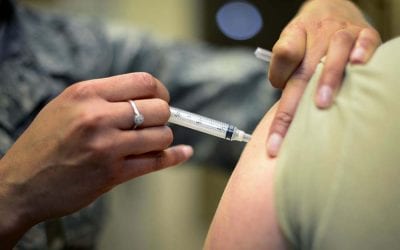In Philadelphia, America’s birthplace, you can join in the nine-day, Wawa Welcome America! celebration.
July 4th kicks off with a brief ceremony at Independence Hall, then continues with the Independence Day Parade starting in Independence National Historic Park.
The celebration culminates at the Eakins Oval, in front of the steps to the Philadelphia Museum of Art. Following “Philly’s Fourth of July Jam,” featuring four-time Grammy award winner, The Roots; Michael McDonald, Estelle, Earth Wind & Fire, and Sara Bareilles, the “Grand Finale Fireworks,” one of the country’s most spectacular pyrotechnic shows, will dazzle more than 500,000.
Across the nation, communities large and small will have their own “Independence Day” celebration, ending with a fireworks show. Each year, I see more and more celebrants attempting to photograph it, only to be disappointed with blurry, poor exposures, rarely showing the brilliant colors of the show.
I have a few updated suggestions for your July 4th photos.
• Arrive early — Before the show, determine from where the fireworks will be launched and try to find an unobstructed view where you can compose your photos successfully. Consider topography, obstructions such as overhanging tree limbs, and how high the fireworks might go.
The area will likely be packed with folks for the show. Choose a position which won’t have people wandering in front of your camera or accidentally kicking your equipment. Stay away from streetlamps and other light sources to avoid light flare.
• Always use a tripod — Fireworks photography requires exposures lasting several seconds to capture the light trails and full bursts. Long exposures require “rock solid” camera support to ensure sharp exposures, so use a tripod appropriate to hold your camera/lens.
If you can, use a remote shutter release to increase your camera’s stability. That way you won’t have to touch your camera, shaking it despite tripod use, to snap your photos.
• Use manual focus — The fireworks, presumably several hundred yards/meters away, will be virtually impossible to focus on, due to the darkness, so if you can, use manual focus and set your lens for infinity.
Point & Shoot Tip: Digital Point and Shoot cameras generally don’t have a manual focus mode. Set your Point and Shoot to landscape mode, if it has one, as a “work around.” It’s essentially the same as setting a DSLR to infinity.
• Use the highest quality for your photo — I shoot fireworks exclusively in RAW format due to the high dynamic range of the scene. If you take your photos in JPG, choose the best quality and the largest size (least compression) to help prevent JPG compression artifacts from being created due to the high dynamic range of the scene, with its bright colored light of fireworks against a black sky.

• Reduce noise in your photos — Long exposures and high ISO settings can cause noise in your digital photographs. Noise (colored pixel artifacts) will mostly be visible in the very dark areas of your fireworks photos. Therefore, choose low ISO for your camera (50–200). Noise is like the grain found in film photographs.
Extra Tip: Noise in digital photographs is accentuated when using timed (longer) exposures, so it’s even more important than for regular photographs to keep your ISO setting low.
• It’s night, it’s dark, but very long exposures aren’t needed — Some photographers don’t realize how bright fireworks are, which causes them to overexpose their images. I use my DSLR in manual mode. I expose my photos from 1 to 4 seconds. Shorter exposures could miss the full burst. Longer exposures produce washed-out images.
It’s hard, but try to anticipate the beginning of the burst and open the shutter, then close it immediately after it reaches its peak. Anticipating the explosion is difficult, but not impossible.
Since the shutter speed must be long enough to record the burst, you control the exposure by choosing the correct aperture.
• The aperture is based on the ISO setting — A good starting point would be ISO 100 – f/8 to f/16 or ISO 200 f/11 to f/22. Check your digital photos periodically and adjust the aperture as necessary.
Extra Tip: Bring a flashlight — You’re going to be shooting in the dark. A small flashlight will enable you to see your camera’s controls and settings.
• Frame your photo well — A vertical format is often better, as the trail of a skyrocket is usually upward and not wide, but consider the crowd, your position, and how the fireworks are deployed.
• Use a normal to wide angle lens or appropriate zoom — Your position relative to the fireworks bursts and how you frame your photos will determine the exact focal length you use.

• Generally, turn off your flash — For photographing the fireworks themselves your flash is useless, but it can be useful if you’re trying to light something in the foreground to give your photo context or extra interest.
Ned Levi is a long time professional photographer with a passion for wildlife and travel photography. You can view some of Ned’s travel and other photos at NSL Photography or get more travel photography advice at the NSL Photography Blog.
After many years working in corporate America as a chemical engineer, executive and eventually CFO of a multinational manufacturer, Ned founded a tech consulting company and later restarted NSL Photography, his photography business. Before entering the corporate world, Ned worked as a Public Health Engineer for the Philadelphia Department of Public Health. As a well known corporate, travel and wildlife photographer, Ned travels the world writing about travel and photography, as well as running photography workshops, seminars and photowalks. Visit Ned’s Photography Blog and Galleries.


